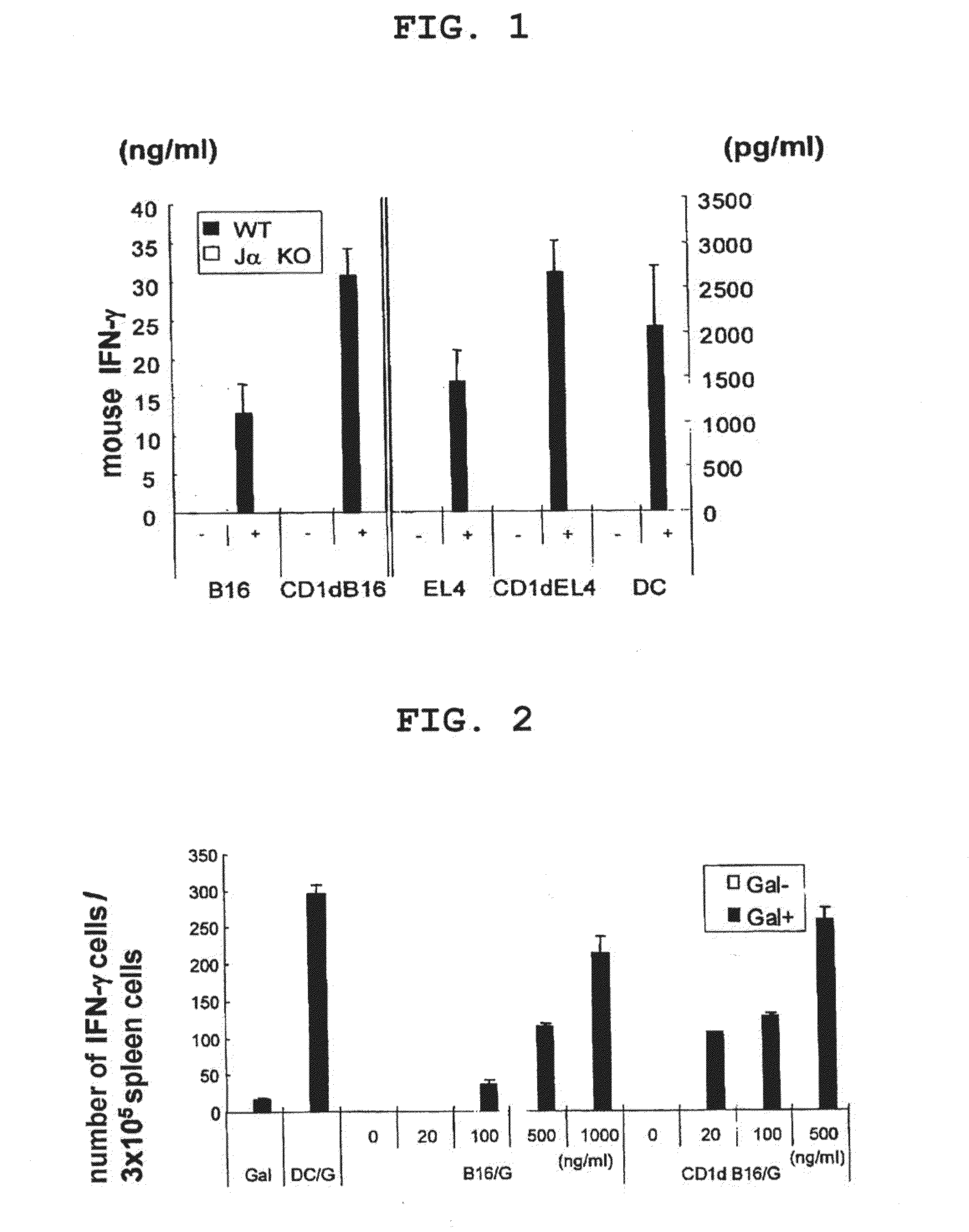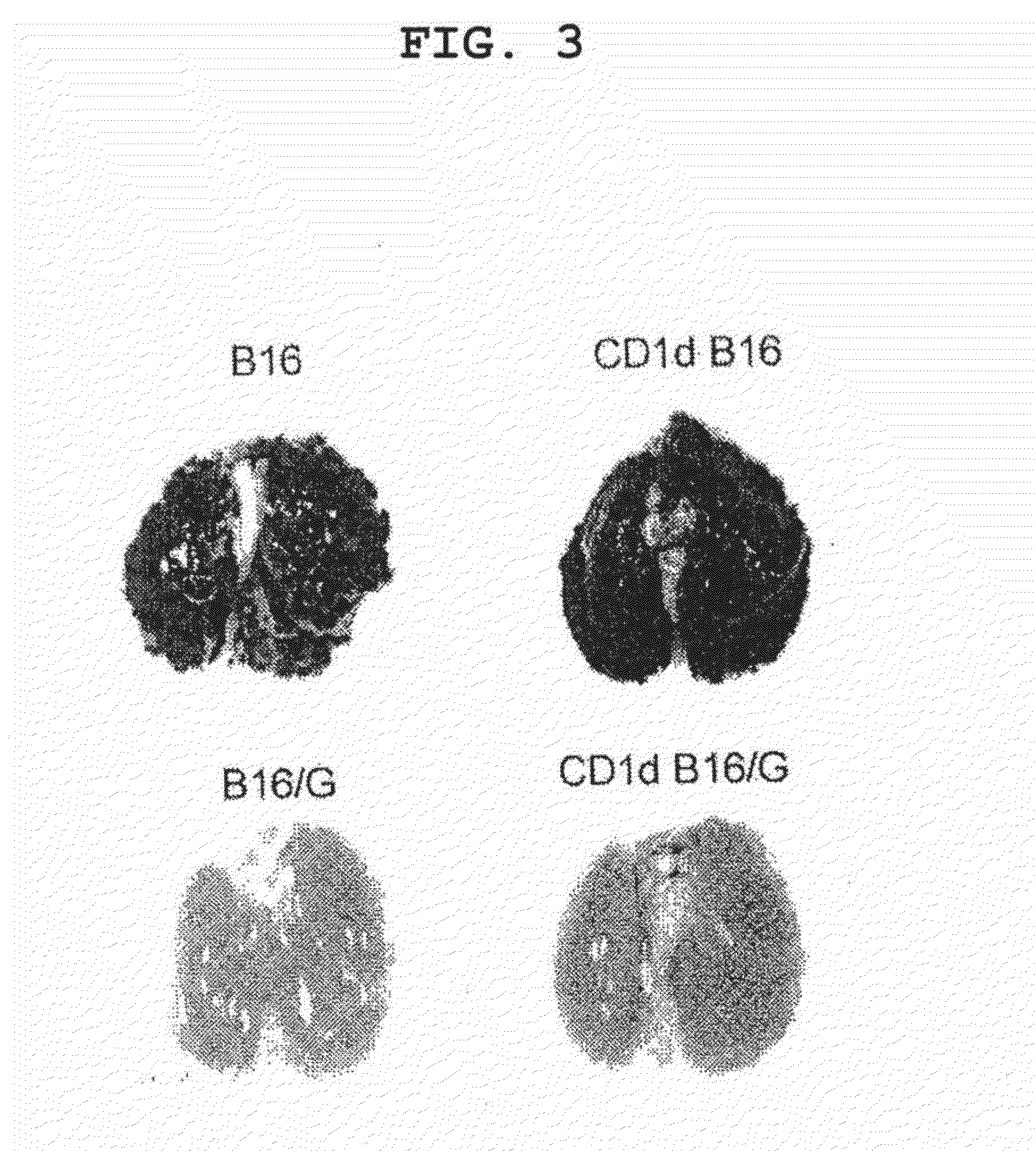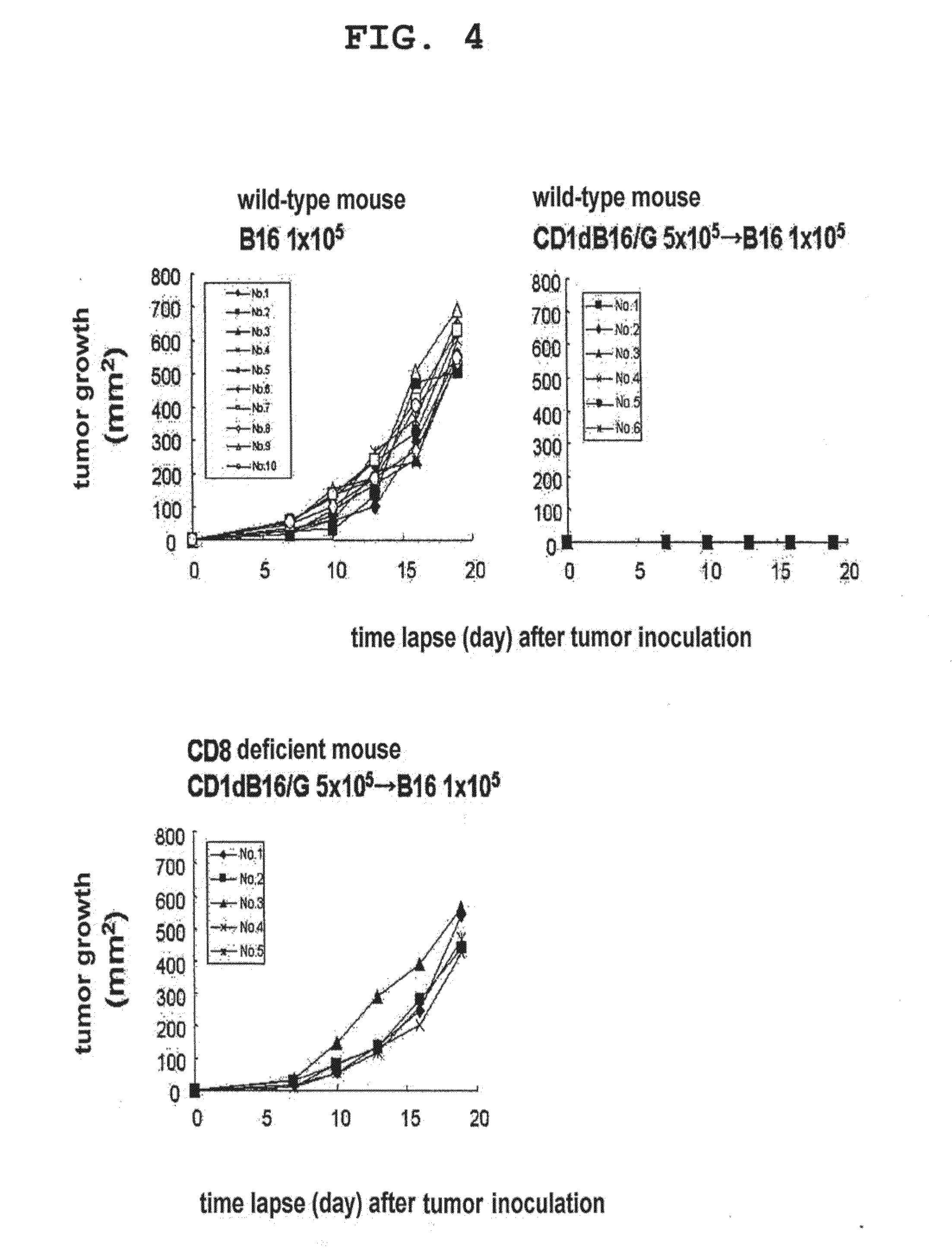Immunotherapeutic method using artificial adjuvant vector cells that co-express cd1d and target antigen
a technology of vector cells and immunotherapy, which is applied in the direction of vertebrate antigen ingredients, biochemical instruments and processes, antibody medical ingredients, etc., can solve the problems of mrna transfection efficiency and weak expression level of tumor antigen in dendritic cells, limited co-administration method in terms of timing and the number, and death of mi
- Summary
- Abstract
- Description
- Claims
- Application Information
AI Technical Summary
Benefits of technology
Problems solved by technology
Method used
Image
Examples
example 1
[0144]This example describes the materials and methods for Examples 2-8.
[0145]Preparation of Tumor Cells Pulsed with α-GalCer
[0146]As the tumor cell line pulsed with α-GalCer, mouse-derived melanoma cell line B16 and mouse-derived T lymphoma cell line EL4 were used. α-GalCer was added to B16 (2×104 cells / ml) or EL4 (1×105 cells / ml) to a concentration of 500 ng / ml, and the cells were cultured at 5% CO2, 37° C. As the culture medium, 10% FCS-containing RPMI (10 ml) was used. After culturing for 2 days, B16 or EL4 pulsed with α-GalCer was washed 4 times with PBS, and then collected.
[0147]Preparation of Dendritic Cells Pulsed with α-GalCer
[0148]Bone marrow cells were collected from the femur and shin bone of wild-type mice (C57BL / 6, 6- to 8-week-old, female), and CD4, CD8, B220 or I-Ab positive cells were removed using antibodies and complements. The obtained cells were adjusted to 1×106 cells / ml with GM-CSF (10 ng / ml) and 5% FCS-containing RPMI, and cultured in a 24 well plate. The med...
example 2
[0153]The example demonstrates in vitro activation of NKT / NK cells by tumor cells pulsed with CD1d ligand.
[0154]B16 or EL4 cells pulsed with α-GalCer or dendritic cells (control) pulsed with α-GalCer were co-cultured with mononuclear cells (fraction containing NKT / NK cells) derived from the liver of a wild-type mouse or Ja281 gene deficient mouse (Va14+NKT cell deficient mouse), and the level of IFN-γ in the culture supernatant was measured by ELISA and using an anti-IFN-γ antibody. Since IFN-γ is a substance specifically produced by activated NKT / NK cells, the level of IFN-γ in the culture supernatant is an index of activated NKT / NK cells.
[0155]In addition, an experiment similar to the above was performed using B16 and EL4 cells into which a CD1d expression retrovirus vector (produced by using mouse CD1d gene (GenBank Accession No.: NM-007639) had been introduced).
[0156]As a result, both B16 and EL4 cells pulsed with α-GalCer activated NKT / NK cells (see FIG. 1). In addition, B16 an...
example 3
[0158]The example demonstrates in vivo activation of NKT cells by tumor cells pulsed with CD1d ligand.
[0159]B16 cells (5×105 cells) or dendritic cells (control, 1×106 cells) pulsed with α-GalCer were intravenously administered to mice (C57BL / 6, 6- to 8-week-old, female) in the tail vein. Two days after the administration, the spleen was isolated from the mice and filtered with a cell strainer, red blood cells were hemolyzed with ACK lysing buffer, and the splenocytes were adjusted with 5% FCS-containing RPMI. 3×105 cells / well were cultured for 16 hr in the presence of α-GalCer in the same manner as in Example 2 and the level of IFN-γ in the culture supernatant was measured by ELISPOT and using an anti-IFN-γ antibody. In addition, an experiment similar to the above was performed using B16 cells into which a CD1d expression retrovirus vector had been introduced.
[0160]As a result, the dendritic cells pulsed with α-GalCer induced α-GalCer reactive IFN-γ producing NKT cells (see FIG. 1)....
PUM
| Property | Measurement | Unit |
|---|---|---|
| co-culture time | aaaaa | aaaaa |
| co-culture time | aaaaa | aaaaa |
| concentration | aaaaa | aaaaa |
Abstract
Description
Claims
Application Information
 Login to View More
Login to View More - R&D
- Intellectual Property
- Life Sciences
- Materials
- Tech Scout
- Unparalleled Data Quality
- Higher Quality Content
- 60% Fewer Hallucinations
Browse by: Latest US Patents, China's latest patents, Technical Efficacy Thesaurus, Application Domain, Technology Topic, Popular Technical Reports.
© 2025 PatSnap. All rights reserved.Legal|Privacy policy|Modern Slavery Act Transparency Statement|Sitemap|About US| Contact US: help@patsnap.com



